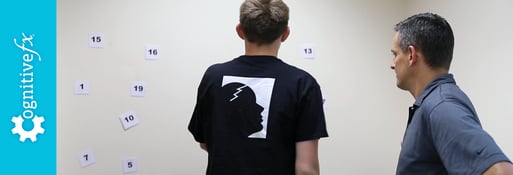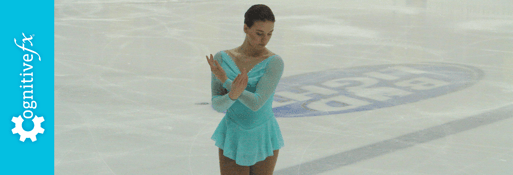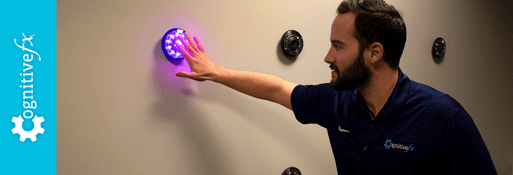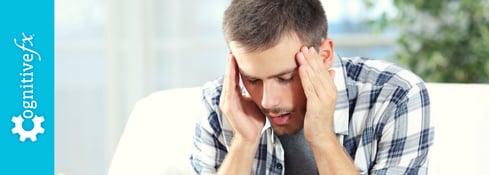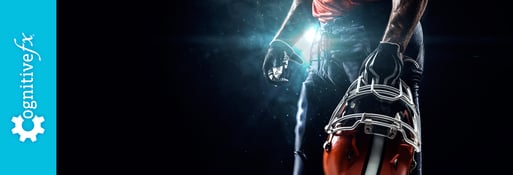If you’ve recently suffered a concussion, you might be confused about when and how to return to exercise. Maybe you were told to avoid all physical activity until you feel better. But what if that time never comes?
Even if you are feeling better, how do you know it’s safe to start exercising? What kind of exercise is it OK to do after a concussion? What if you start feeling terrible every time you try to start exercising again? Or, what should you do if you feel fine while you’re exercising but then you’re hit with headaches and brain fog afterward?
You're not alone if you’re looking for answers to these questions. Many of the patients we see at Cognitive FX come to us with these questions and problems. In this article, we’ll explain:
If you’ve never heard of post-concussion syndrome before, start by reading our guide to post-concussion syndrome (PCS) symptoms, diagnosis, and treatment.
If you’re experiencing symptoms (such as difficulty exercising) that won’t resolve after a head injury, you're not alone—and you're not imagining it. Help is available. Peer-reviewed research shows that 77% of patients treated at Cognitive FX experienced significant improvement in their post-concussion symptoms. Cognitive FX is the only post-concussion treatment clinic with third-party validated outcomes. To see if you are eligible for treatment, schedule a consultation.
Note: Data relating to brain function mentioned in this post may be from our first generation fNCI scans. Gen 1 scans compared activation in various regions of the brain with a control database of healthy brains. Our clinic is now rolling out second-generation fNCI which looks both at the activation of individual brain regions and at the connections between brain regions. Results are interpreted and reported differently for Gen 2 than for Gen 1 and averages are still forthcoming.
Exercise After a Concussion: Why It’s Important
.jpg?width=1000&name=shutterstock_235300924%20(1).jpg)
Most people are aware of the general benefits of aerobic exercise: Regular exercise helps prevent or manage major health problems such as heart disease, diabetes, and obesity. It lowers blood pressure and improves mental health. But aerobic exercise also helps the brain function by increasing blood flow to the brain, which gives the brain the oxygen it needs to function properly. It also causes the brain to produce chemicals that stimulate cell growth and improve neuroplasticity.
For example, brain-derived neurotrophic factor (BDNF) is a protein that promotes the growth of neurons and increases synaptic plasticity, which improves communication between cells in the brain. Studies show that every time you exercise, your body produces this protein. Regular exercise increases its production and benefits even more. This post-exercise cognitive boost continues for hours after exercise and is an important factor in healing from brain trauma and in improving cognitive abilities. In a nutshell, you need to exercise so that your brain can obtain and use these chemicals to heal.
This means that whether you’re an athlete recovering from a sport-related concussion or someone whose normal activity level is lower, exercise will be an important part of your recovery.
Further reading: Identifying and treating PCS in adolescents and children
I was told not to do anything after my concussion. Is that correct?
Until recently, most doctors advised patients with a concussion to rest completely in a dark room from mental and physical activities until concussion symptoms disappeared. This practice of strict rest, known as cocooning, could last from several days to several weeks. Unfortunately for some patients, their symptoms lasted much longer — months or even years. The isolation they endured led to an increase in depression and anxiety, and cocooning actually slowed their recovery time.
Studies now show that complete rest lasting longer than 2 days can lead to prolonged recovery. Moderate physical activity within the first week of a concussion, even on the first or second day, actually speeds recovery time and lessens the chances of developing post-concussion syndrome. Light exercise will still produce those chemicals that your brain needs to begin the healing process. In addition, staying connected to people will help your mental health and attitude.
What kinds of exercise can I do right after a concussion?

You need to use some common sense when you first return to exercise after a concussion. Don’t do anything that puts you at risk for another concussion. Avoid activities that cause your head or body to jolt, such as contact sports, running, and jumping.
So, what can you do? Choose mild exercise that increases your heart rate without drastically increasing your symptoms. Riding a stationary exercise bike or working out in a pool are good options. Walking at a moderate pace is another good activity. You could also try using an elliptical machine.
If your symptoms are still really unpleasant, you might try to do some strength training that is intense enough to raise the heart rate slightly. Other activities that might work are Pilates, leg lifts, squats, and lunges.
It’s OK to exercise even though you aren’t feeling great yet. If you find you’ve pushed yourself too far and you experience drastically worse symptoms, back off a little next time and try again. The important thing is to keep exercising. Your brain needs that post-exercise cognitive boost to heal.
Keep in mind that even exercising for 5 minutes, if that is what you can tolerate, is absolutely worth doing. With practice, you can turn those 5 minutes into 7 minutes, and those into 10 minutes, and so forth. Continue gradually increasing how long you exercise until you hit a good number.
You may also find it helpful to exercise in intervals. Try 30 seconds to one minute of intense cardio, followed by two minutes of controlled breathing (we often use a pattern of 4 seconds in, one-second hold, and 6 seconds out). If two minutes isn’t enough time to bring your heart rate down to baseline (using a heart rate monitor can be helpful here), take more time until you feel calm and able to do another round of cardio.
As you recover, you should be able to manage longer cardio spurts with shorter recovery times in between.
How do I know if I’m exercising too hard after my concussion?
You can use the Rule of Three to determine when you need to stop.
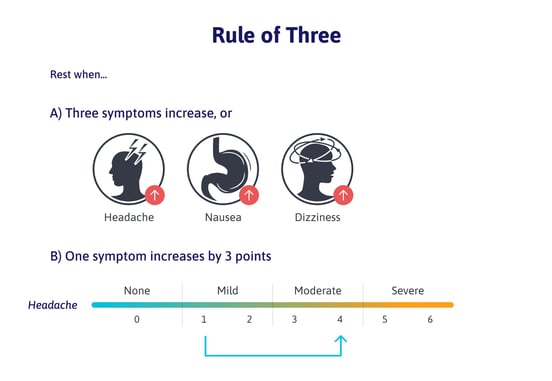
If the severity of one symptom increases by three on a six-point scale (according to your own self-evaluation), then it’s time to stop. Or, if you notice a worsening of three symptoms, such as a headache, nausea, and dizziness, then it’s also time to stop. If you’re practicing intervals, you can practice breathing for a few minutes and then try again. As long as you’re able to keep these symptoms mild by bringing them down after each interval, you should be fine to continue.
Once you’re done exercising, it’s good to do some cognitive exercises, followed by a real rest. Here are two resources that will help:
Causes of Post Concussion Syndrome Exercise Intolerance
.jpg?width=1000&name=shutterstock_1070124950%20(1).jpg)
What if it’s been a few weeks since your concussion and you’re still experiencing symptoms? Maybe you feel fine until you try to exercise, and then your symptoms come back. Or, you might feel OK while you’re exercising, but you feel terrible for hours afterward.
Exercise intolerance is a common component of post-concussion syndrome and includes typical concussion symptoms such as headaches, dizziness, fatigue, and brain fog during or after exercise. The symptoms are sometimes so alarming or unpleasant that people who experience them tend to avoid exercise. However, recent studies show this only prolongs recovery time.
Further reading:
In addition, not exercising can worsen your condition. We all know that when we don’t exercise, we lose muscle strength and our endurance decreases. Similarly, if someone with post-concussion exercise intolerance doesn’t exercise because of the symptoms they are experiencing, it causes the damaged areas in their brains that govern those processes to malfunction even more. So, the longer a person goes without exercising, the worse their symptoms might become.
Post-concussion exercise intolerance can be caused by any or all of the following:
- Autonomic nervous system dysfunction
- Cerebral autoregulation
- Vision problems
- Vestibular problems.
Concussion patients can have all of these problems since mild traumatic brain injuries (mild TBI or mTBI) often affect more than one area of the brain. We’ll examine these issues individually in the sections below. We’ll also give you some suggestions to help you figure out which one might be causing your problems and where to seek treatment.
Autonomic Nervous System Dysfunction (or Dysautonomia)

The autonomic nervous system (ANS) controls vital body mechanisms such as heart rate, blood pressure, breathing, and temperature control. The ANS is sometimes damaged as a result of a concussion or brain injury and if it’s not working correctly, you’re going to feel bad when you exercise!
The ANS is comprised of two subsystems: the sympathetic nervous system (SNS) and the parasympathetic nervous system (PNS).
The SNS helps our bodies respond to sudden stress by producing cortisol and causing our heart rate and blood pressure to increase to meet temporary, stressful demands. It is often referred to as the “fight or flight” system.
The PNS, on the other hand, helps slow the heart rate and return our bodies to normal after a stressful episode. It is often referred to as the “rest and digest” system.
If those systems are disrupted to the point that you have trouble exercising, we refer to that as ANS dysfunction. If you experience other symptoms related to the ANS not working properly (like post-concussion digestive issues and temperature dysregulation), it might be considered dysautonomia. Your doctor can help you understand the difference and recommend treatment accordingly.
So why does ANS dysregulation cause problems during exercise? When you exercise, you are putting greater demands on your body. Your heart rate, blood pressure, and blood flow need to increase appropriately. When you stop exercising, they should gradually reduce to return your body to resting condition. Your brain needs this period of rest to heal.
But with exercise intolerance, the SNS is often in a near-constant state of overreacting. Your blood pressure and blood flow regulation to the brain may not work as they should. As a result of vascular dysregulation (essentially, blood flow not working properly), you might feel pressure in your head, or you might get a headache that feels like a band is tightening around your head. You might hear your heart pounding in your head, get shortness of breath, or feel nauseated.
Unfortunately, if you’ve stopped exercising because of PCS symptoms, it creates a vicious cycle that only makes things worse. Exercise is crucial to returning the ANS to normal function as well as to healing other post-injury problems. Using the strategies we presented above or working with a trained therapist can help.
Cerebral Autoregulation
A healthy brain needs blood pressure and blood flow to be constant. Any significant change could damage brain tissue or neurons. But when you experience stress (regardless of whether it is physical, emotional, or mental), your heart rate and blood pressure change in response. Cerebral autoregulation (CA) maintains a relatively constant flow of blood throughout the brain even when your heart rate or blood pressure change.
To keep blood flow and pressure in your brain constant, CA will either constrict or dilate (e.g., make smaller or larger) the blood vessels that keep blood moving in and out of your brain. To do that, CA is in constant communication with your autonomic nervous system (described above).
But sometimes, the neurons that control the CA system are damaged after a brain injury. It may not respond correctly when you experience increased or decreased blood pressure. So, when you exercise, blood pressure in your brain might increase, leading to symptoms like nausea, dizziness, and headaches. If your blood pressure decreases, you might find yourself suddenly lightheaded.
Increased or decreased blood pressure is common after a brain injury. In fact, some patients experience constantly changing blood pressure in their brains, which causes chronic pain or recurring symptoms.
As with the ANS, repairing the CA system is best done via physical exercise. Exercise puts stress on the brain and forces the autoregulation system to be used. At first, you’ll likely experience symptoms when you try to exercise. But under the watchful eye of a therapist, you can help your brain learn from its failures. With the proper timing and order of therapies, patients can recover from problems with cerebral autoregulation.
Is Exercise Safe with Cerebral Autoregulation Troubles?
If you’ve been reading closely, you may wonder whether it’s really safe to exercise when your CA system isn’t functioning properly. After all, you’re exposing your brain to changes in blood pressure, right?
Cardiovascular exercise is the only way for the CA system to start being used again and to figure out how to do it correctly. For example, when you get surgery, then you have to rehabilitate the muscles affected. If you simply rest the muscles, they will never get back to what they were before and they might not work properly. But if you immediately tried to do everything you could before right after surgery, then you could damage even more of your body because your muscles weren't ready for it.
It’s the same with exercise after a head injury. You have to do it in a sub-symptom level way and slowly build up to more. That way, you don't harm yourself and you still get the benefits and improvement of exercise.
Note: Navigating CA problems is safest when done under the supervision of a knowledgeable therapist. If you’d like to learn more about treatment options, contact us.
Vision Problems
Many patients with post-concussion syndrome have vision problems that can cause symptoms that make exercise difficult or impossible, such as dizziness and headache. It might be that your eyes are having trouble focusing, or you could be experiencing problems with your peripheral vision. These problems are often overlooked and undiagnosed after an mTBI.
If you want to check to see if your problems are being caused by vision issues, try exercising with your eyes closed and see how you feel. Obviously, you need to be careful about how you do this! You could try riding a stationary bike with your eyes closed. You could also try doing some crunches or other strength training exercises that won’t put you in danger if you do them with your eyes closed. If you can do those without experiencing symptoms, your exercise intolerance might have a visual cause.
If you suspect you might have vision problems due to a concussion, it’s important that you see a specialist for an evaluation. Neuro-optometrists and neuro-ophthalmologists are doctors who are trained to diagnose and treat vision problems associated with traumatic brain injury.
Vestibular Problems
The vestibular system is part of the inner ear. It works with information it receives from the eyes, muscles, and joints to help us maintain balance and spatial awareness.
If this system was damaged by a concussion or other head trauma, the brain can receive erroneous signals about the body’s position. As a result, you might experience dizziness, vertigo, nausea, head pressure, and headaches when you are moving. It can also cause excessive fatigue.
Here’s a simple test to see if vestibular impairment might be causing your exercise-induced symptoms: Try an exercise with your head immobilized as much as possible. For example, you might try riding a recumbent bicycle, keeping your head as still as possible. If exercising like that doesn’t induce your symptoms, vestibular issues might be causing your problems.
Further reading: Post-concussion vestibular therapy
How You Can Recover from Post-Concussion Exercise Intolerance
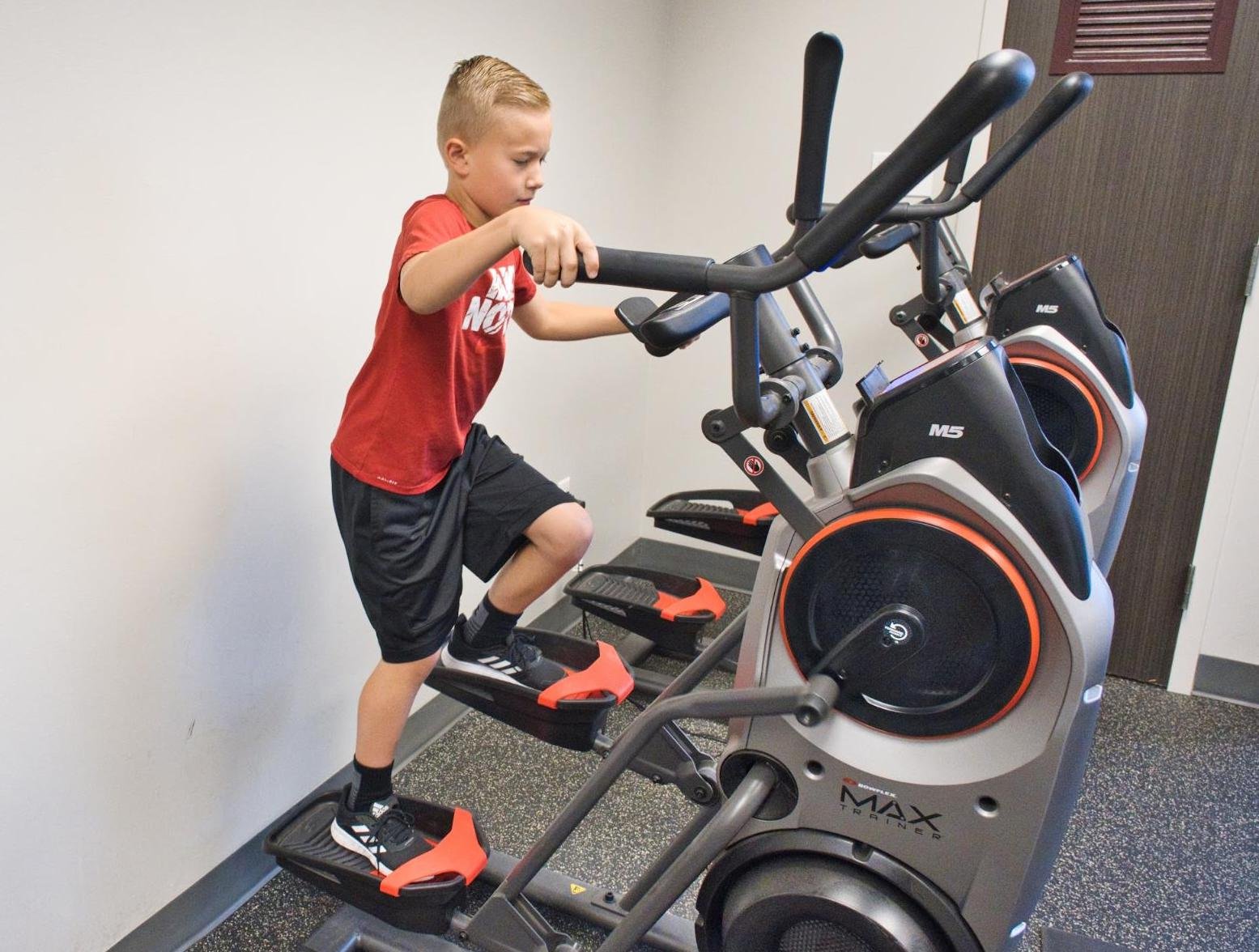
If you have been living with exercise intolerance and other persistent symptoms that haven’t gone away despite months or even years of rest, you may have given up hope of making a full recovery. However, many people have found success with new treatment methods.
Dr. John Leddy, director of the University at Buffalo Concussion Management Clinic, and his co-author, Dr. Barry Willer, published research findings that are dramatically changing the way concussions are treated, resulting in better outcomes and faster recovery. The change from the recommendation to cocoon after a concussion to beginning mild aerobic exercise almost immediately afterward is in part a result of Dr. Leddy’s findings.
People suffering from a concussion need aerobic exercise and the chemicals produced by it in order to heal. However, that’s a problem if exercise itself causes miserable suffering.
The best way to treat exercise intolerance associated with autonomic nervous system dysfunction is to determine the point during exercise at which a person begins to feel their symptoms increase, and then to exercise for short periods just below that threshold. This is called your sub-symptom threshold.
Then, the duration and intensity of your exercise program gradually increase over time. Your exercise tolerance will slowly increase until you can exercise normally without negative symptoms. The ANS has to be retrained, and the more you use it successfully, the better it functions.
Aerobic activity is ultimately crucial to success because the key factor in this method is raising the heart rate enough to benefit the brain without drastically increasing symptoms and then gradually making adjustments over time. A precise regimen like this is going to be difficult for an untrained individual to develop. We highly recommend that you find healthcare providers at a concussion clinic or sports medicine practice who are experienced in this treatment method to create a safe and effective exercise protocol that is specific to your needs.
Further reading: Types of doctors for head injury recovery
Where to Find Treatment for Persistent Post-Concussion Symptoms
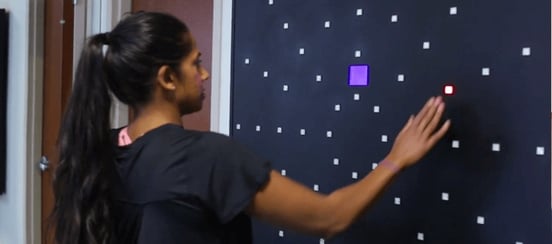
The best and safest way to overcome post-concussion syndrome is to find qualified physicians and therapists to assess your condition and to guide you through the process with an individualized, detailed treatment plan. While there are some providers who can do this for acute concussion, there are few clinics able to provide reliable treatment for patients with post-concussion syndrome (which is when symptoms last for three months or longer after your concussion).
At Cognitive FX, we treat post-concussion syndrome patients every day. During our consultation process, we review the symptoms you’re experiencing along with your head injury history. If we think you’re a good candidate for treatment, the next step is for you to undergo a Functional Neurocognitive Imaging scan (fNCI). This specialized MRI helps us understand which parts of your brain are not functioning correctly along with which regions are communicating with each other in a dysfunctional way (too much, too little, and so forth).
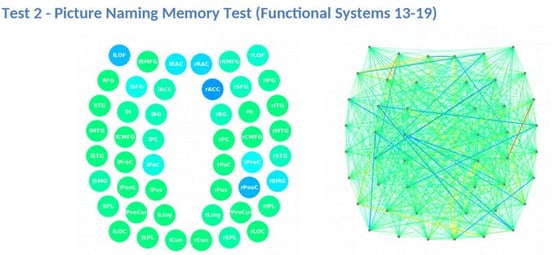 On the scan, dark blue signifies brain regions which are underactive. Red lines signal hyperconnectivity.
On the scan, dark blue signifies brain regions which are underactive. Red lines signal hyperconnectivity.
In addition, we evaluate your balance, responsiveness, vision, vestibular function, and more. We don’t require a treadmill test since we can observe and adjust your exercise during treatment.
Armed with your results, we develop a thorough, personalized, evidence-based treatment plan. Concussion treatment at our clinic involves a combination of exercise training, multidisciplinary therapies, and cognitive rest.
During our Enhanced Performance in Cognition (EPIC) Treatment, we offer multidisciplinary therapies designed to rehabilitate your brain, nervous system, visual system, and vestibular system. Some therapies include…
The combined effect is to help your brain and body re-establish healthier coordination, improve blood flow dynamics in the brain, and restore cognitive function.
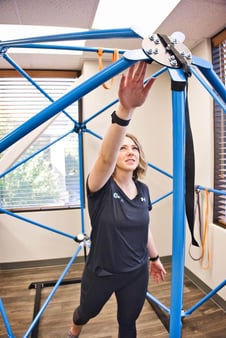
At the end of your treatment, we send you home with a detailed strategy to continue your concussion recovery during the months ahead. While most patients aren’t completely symptom-free at the end of treatment, on average, patients report a 60% improvement in symptoms after one week of treatment. They continue to experience symptom resolution and improvement at home as they practice their homework and slowly resume normal daily activities.
Ready to speak with a member of our medical staff about your experience? Schedule a consultation.

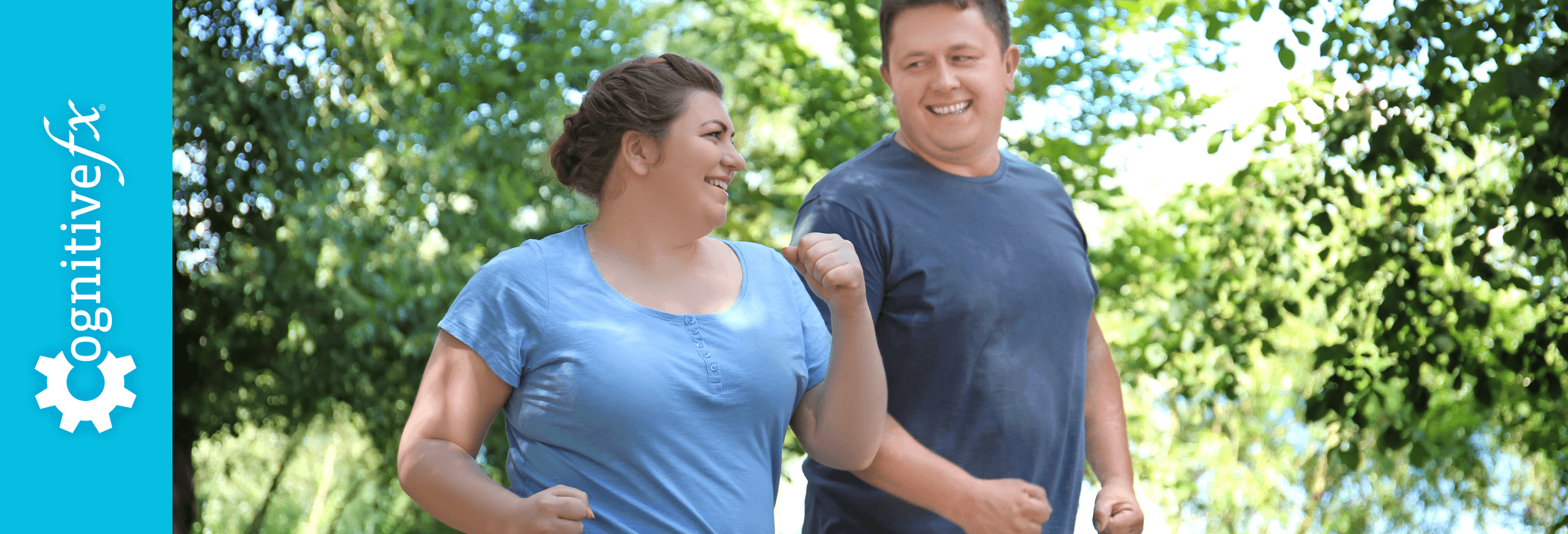
.jpg?width=1000&name=shutterstock_235300924%20(1).jpg)


.jpg?width=1000&name=shutterstock_1070124950%20(1).jpg)






